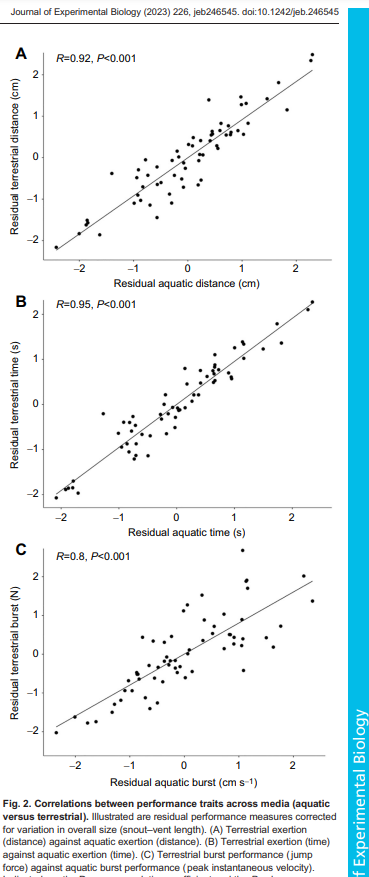Laurie's work comes to fruition... again
It only seems a few weeks ago that Laurie was defending her thesis in Paris (see here), yet here comes a product of that exceptional work. By now we are all familiar with the African clawed frog, Xenopus laevis, and we know that it has to move overland between ponds in order to disperse (see Measey 2016). Otherwise, these frogs spend most of their time in water swimming around, finding food, mating and otherwise going about their lives. So when it comes to performance, we might expect that as they spend such a large portion of their time in water, they perform better there. In addition, their morphology suggests that these animals should be much better at performing in water.
Laurie measured the performance traits of African clawed frogs, using animals collected from the invasive population in France and those from iSimangaliso National Park in KZN. The results, shown in the figure below, are really clear. The frogs were found to perform equally well on land and in water. In fact, individuals that performed better on land also performed better in water. This suggests that there is no trade-off between some animals who do better in water, but worse on land.
Our findings did not meet our expectations, but what this shows us is that these animals do not have morphological specialisations that are exclusively for aquatic environments. Again this finding goes against the commonly held view that these are purely aquatic frogs, and instead shows that they are adapted well for moving on land.
This will not be the last we hear from Laurie or the products of her thesis.
Read more:
Araspin, L., J. Measey and A. Herrel (in press) Does aquatic performance predict terrestrial performance: a case study with an aquatic frog, Xenopus laevis. Journal of Experimental Biology jeb.246545. https://doi.org/10.1242/jeb.246545 pdf
Measey, J. (2016) Overland movement in African clawed frogs (Xenopus laevis): a systematic systematic review. PeerJ 4:e2474 https://doi.org/10.7717/peerj.2474

